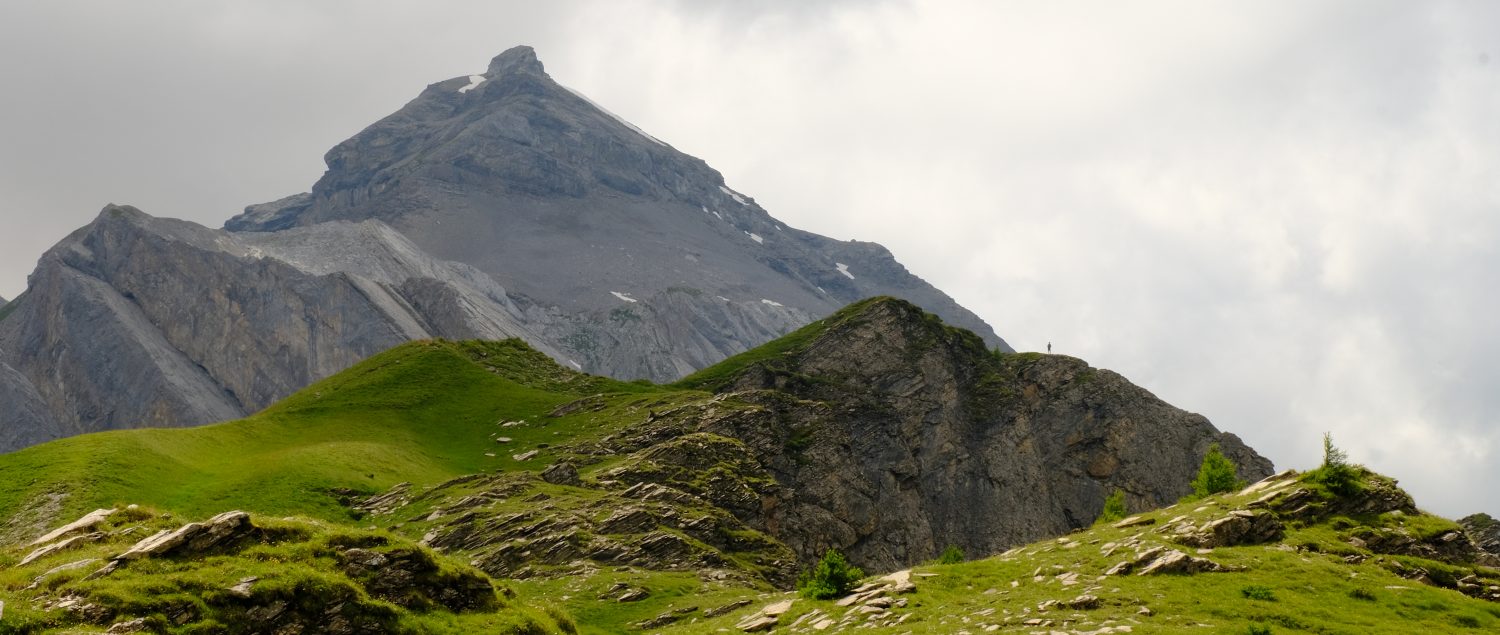Explore quiet northern Kalymnos. Discover a tiny sandy bay, a huge cave adorned with tufa and stalactites and another view-laden ridge walk through fragrant, spiky garrigue and vibrant spring flowers. This walk is accessible by public bus. Climbing equipment is required to enter the cave. Distance: 9.2km Height gain: 470m (for optional extension to Emborios add 2.5km, minimal extra height gain and loss)
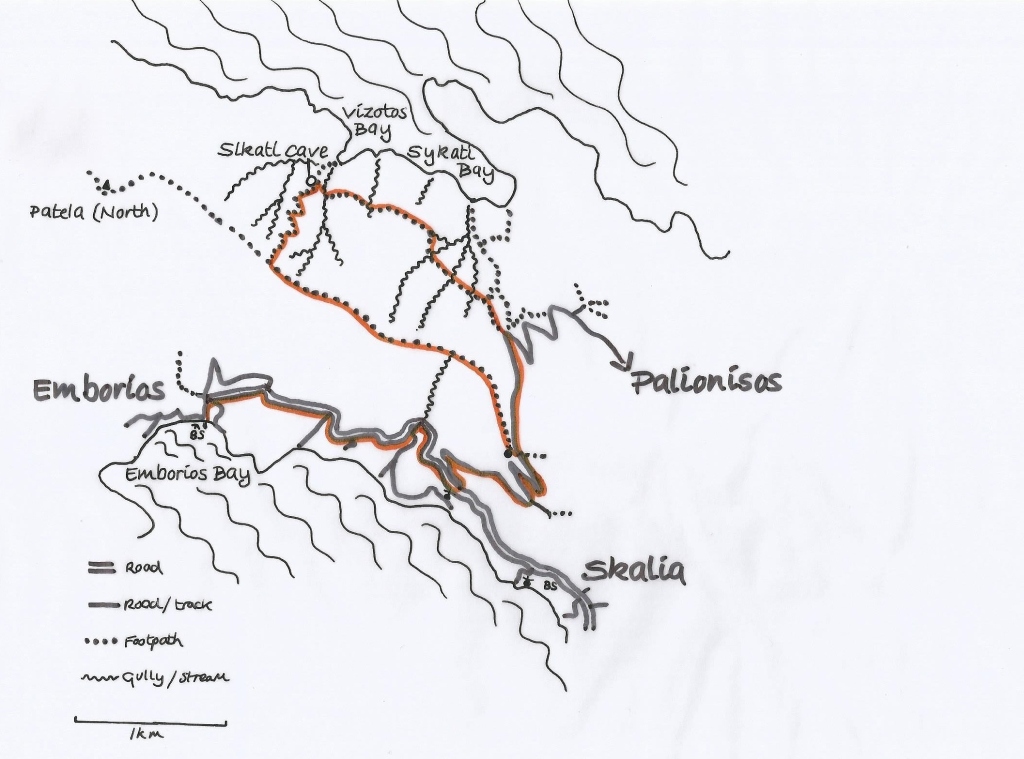
PLEASE REMEMBER most paths on Kalymnos are very rough underfoot and sparsely marked, maps lack the detail of many other European maps and especially, from May to the end of October, the utmost care needs to be taken to avoid potentially fatal heatstroke. There is some excellent advice here: https://www.mountaineering.scot/safety-and-skills/essential-skills/weather-conditions/heat
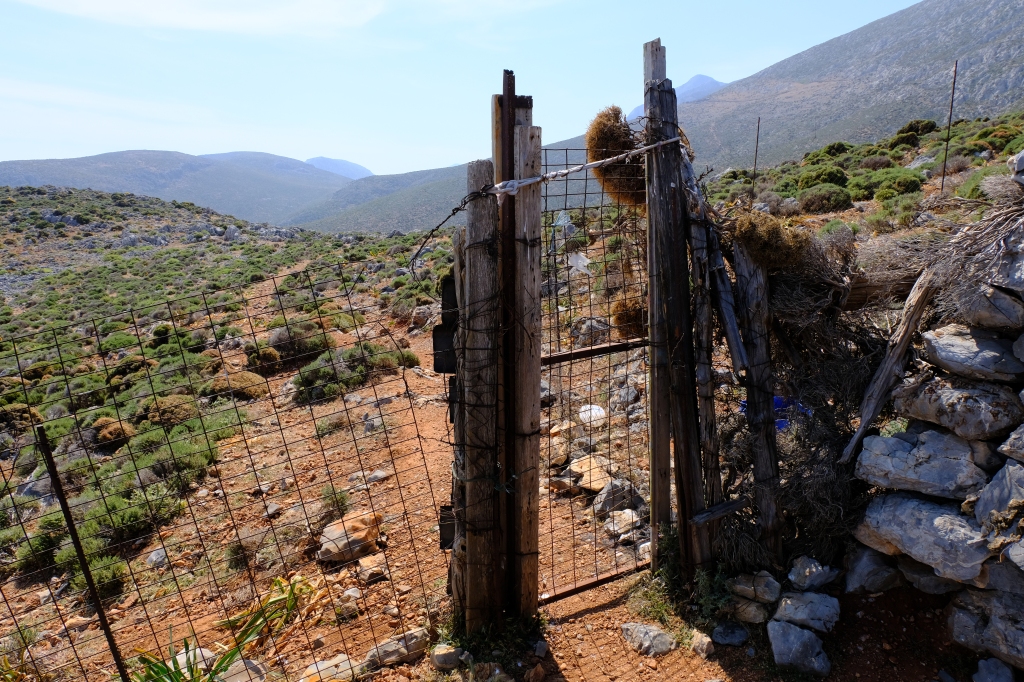
Photo credit: Sally Woodbridge
Ask the bus driver to drop you off at the junction with the road that passes over the ridge to Palionisos, less than a kilometre after the Skalia bus stop (BS). Walk uphill on this road for 2.3km to reach the crest of the pass and descend for 300m to reach a hairpin bend. Go left through a wire gate in the livestock fence on the apex of this bend and be sure to wire it firmly closed behind you.
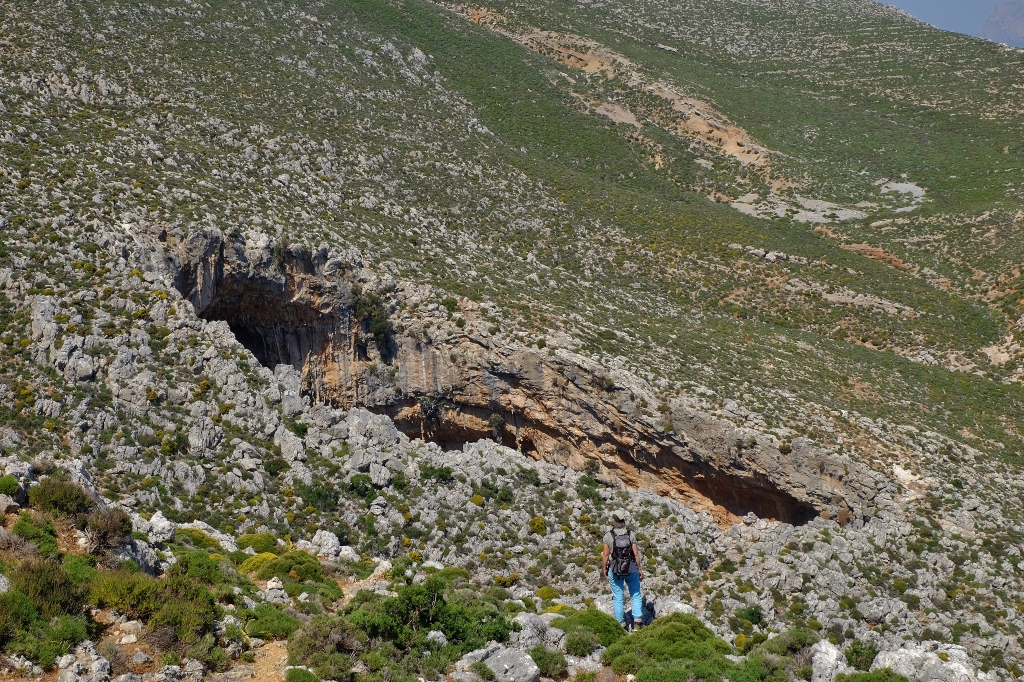
Photo credit: Nick Haine
Go ahead following the line of the fence to the point where it turns uphill, continue on ahead on the discernable path heading towards a point ahead where the path cuts through the hillside. Stay on this path through a small gorge and a goat gate to reach Sikati Cave 2km after leaving the road. Climbing equipment is necessary to access the cave, but there are good views into it from the rim.
Sikati cave is situated within a karst topography. Topography is the study of the land’s surface and its features and forms, both natural and man-made. The dominant on Kalymnos is limestone and, although it withstands many impacts of the weather really well, it dissolves in rainwater. Karst landscapes are characterised by features such as flat, incised limestone pavement, gorges and caves such as Sikati..
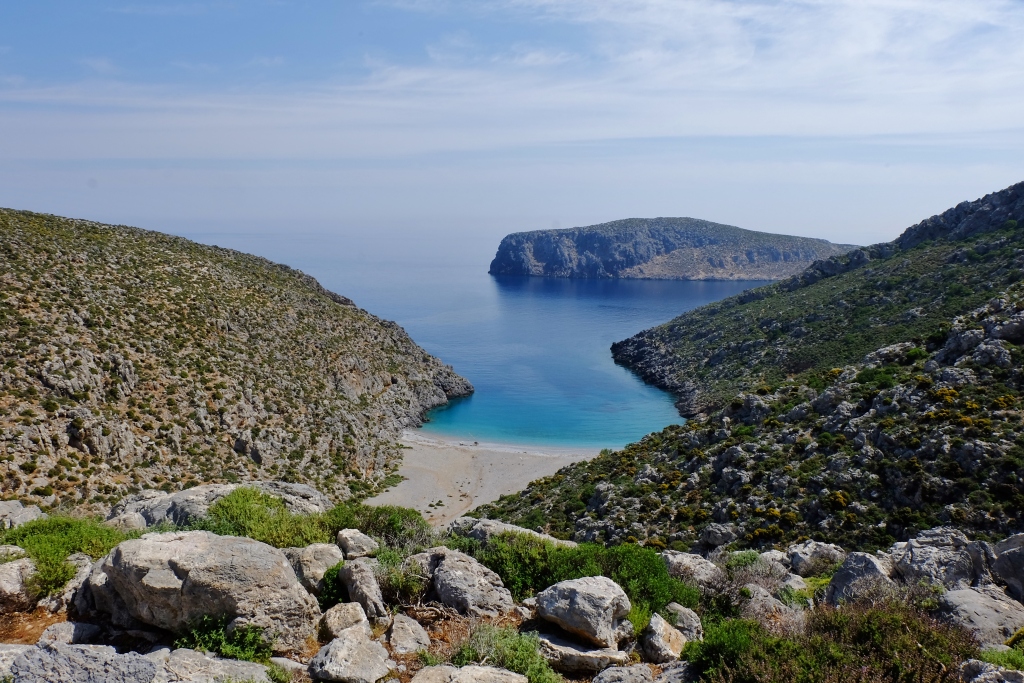
Photo credit: Nick Haine
Ascend on the near side of the cave on a very indistinct path that weaves up the centre of the ridge leading straight up from Sikati cave and the small Vizotos Bay below it to a slight dip on the ridgeline and a small stone shelter above.
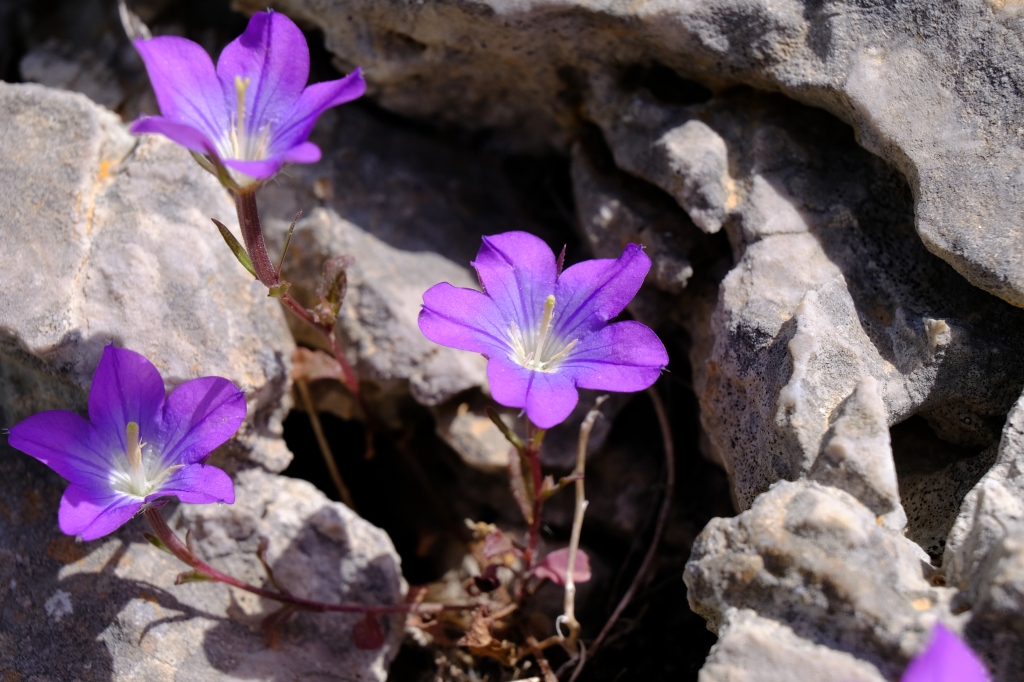
Photo credit: Sally Woodbridge
On reaching the ridgeline turn left and follow it for 2km to reach the road. You will initially ascend gently keeping to the left of the highest ground. Keep to the right of the fence at the penultimate col and finally descend to meet the road.
To the north of Kalymnos and Leros lies the Icarian Sea. Icarus is a figure in Greek mythology whose name is nowadays linked with hubris, excessive pride. As Icarus escaped from Crete with wings made from feathers and beeswax he ignored the advice of his father and flew too high, too close to the sun, the realm of the gods. The beeswax melted and he fell to his death in the Icarian Sea.
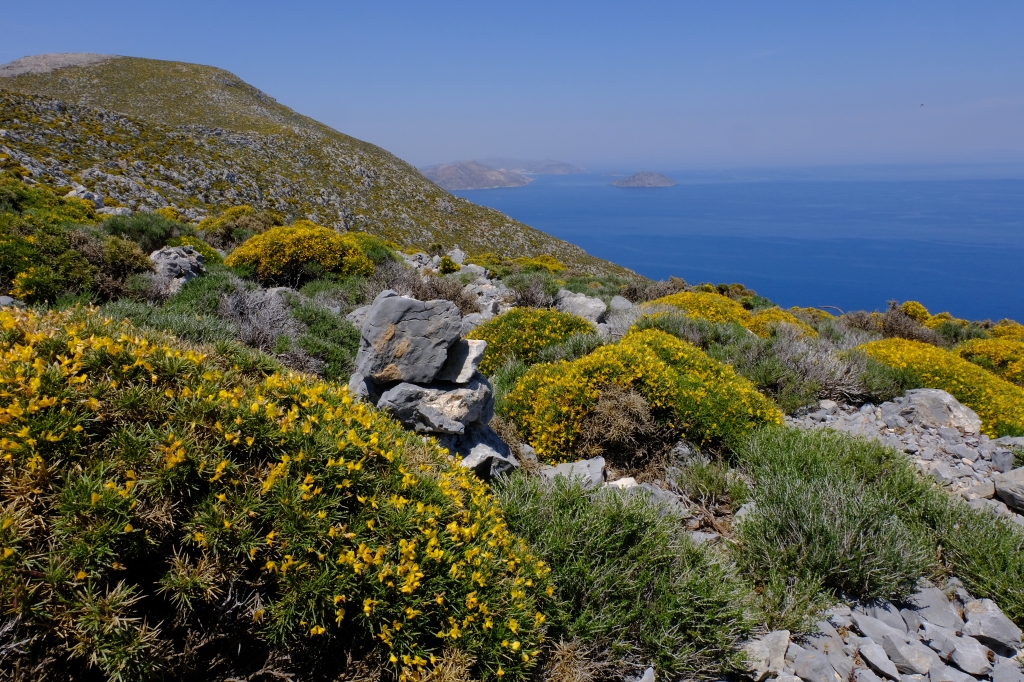
Photo credit: Sally Woodbridge
Turn right down the road and descend for 1.8km to the junction with the main island road.
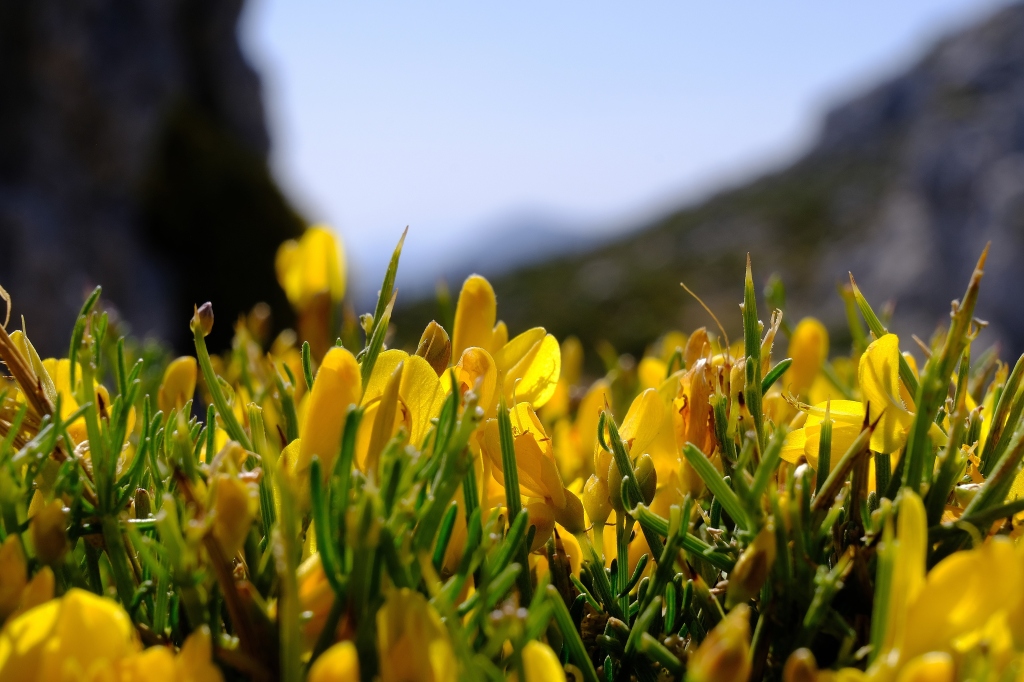
Photo credit: Sally Woodbridge
Optional extension: Turn right along the main island road and follow this to reach Emborios in 2.5km. In Emborios there are cafes and a beach. The bus stop is located at the main jetty (BS).
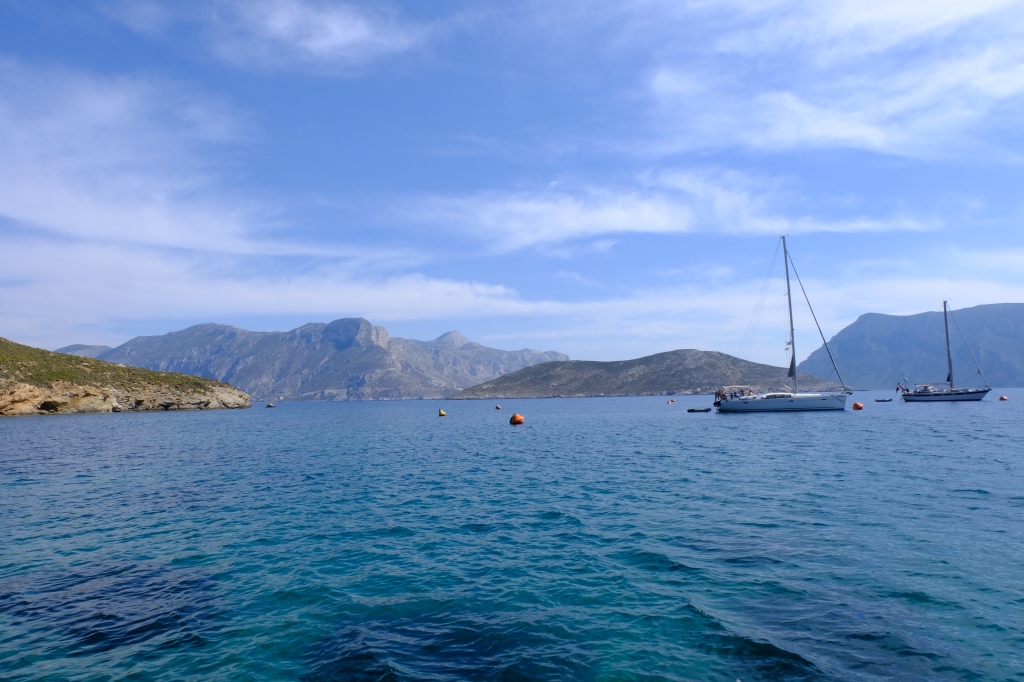
Photo credit: Sally Woodbridge
Please remember that outdoor activities like walking come with inherent risks. The author has endeavoured to make the information as accurate as possible at the time of writing but the decision to undertake the walk is entirely at your own risk. No responsibility can be accepted for any kind of physical injury, loss or damage to you or your property.
- Dawson, Carl (2015), The Kalymnos Trail, Terrain Editions, Greece.
- Thorogood, Chris (2019), Field guide to the wild flowers of the Eastern Mediterranean, Royal Botanic Gardens, Kew, UK.
- 1:25,000 map, no.337 Kalymnos, Telendos, Terrain Editions, Greece.

